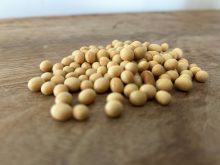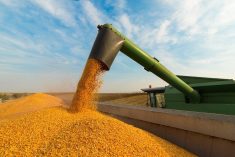Chicago | Reuters — The U.S. Department of Agriculture said on Wednesday it will dedicate at least US$6 billion to help smaller-scale and socially disadvantaged farmers who were hurt by the pandemic, along with producers of organic food and other specialty crops.
The agency said it would also increase by approximately $5.6 billion payments made to cattle producers and growers of crops like corn and soybeans (all figures US$). COVID-19 disrupted agricultural supply chains last year, though corn and soybean prices are now at multi-year highs.
Read Also

Huge crops in South America says analyst
Although there’s a debate over the size of the South American soybean crop, there’s little doubt that it will be an enormous one, said consultant Michael Cordonnier of Soybean and Corn Advisor in Hinsdale, Ill.
USDA Secretary Tom Vilsack said the agency needs to expand financial assistance to more farmers because a review of COVID-19 programs under former President Donald Trump found disparities in the distribution of aid. He said there also was inadequate outreach to disadvantaged producers and smaller operators.
The $6 billion will be used to develop new programs or modify existing proposals using discretionary funding from the coronavirus stimulus relief act approved in December and other aid that was unspent by the Trump administration, according to USDA.
“Many farmers did not benefit from previous rounds of pandemic-related assistance,” Vilsack said.
Since the Trump administration announced COVID-19 aid for farmers in April 2020, USDA has sent more than $23.79 billion to farmers and ranchers through the Coronavirus Food Assistance Program. The agency has spent more than $4 billion purchasing food for distribution to food banks and pantries across the country.
USDA said it will use coronavirus stimulus funds to increase by $4.5 billion payments to more than 560,000 farmers who grow crops such as corn, soy and wheat and previously received aid under the assistance program.
The agency will also increase previous payment rates that cattle ranchers received under the program by more than $1.1 billion, according to a statement. Livestock producers suffered in 2020 as COVID-19 outbreaks among slaughterhouse workers temporarily closed meat processing plants.
— Tom Polansek reports on agriculture and ag commodities for Reuters from Chicago.















